At Alankara, our jewelry is crafted with only the finest materials, ensuring you a lifetime of value. Learn more about the variety of metals we offer to find the one that is right for you.
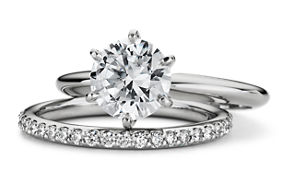
The round brilliant cut diamond is by far the most popular and most researched diamond shape available today. For almost 100 years, diamond cutters have been using advanced theories of light behavior and precise mathematical calculations to optimize the fire and brilliance in a round diamond. In addition to being the most popular and researched shape, round-cut diamonds will typically give you more flexibility in terms of balancing cut, color, and clarity grades while still getting the fire and brilliance you want.
Platinum is our most popular metal for engagement rings and wedding bands. Platinum's naturally white sheen will never fade or change color, and accentuates the sparkle and brilliance of a diamond. Platinum will last forever, making it the ultimate symbol for true, enduring, and everlasting love.
Platinum is durable. Its density makes it the most secure setting for your diamond or precious gemstone. All our platinum rings are crafted with platinum prongs for setting loose diamonds. Because platinum is a naturally white metal, re-plating is unnecessary; it will always hold its beauty.
Though it is the strongest of jewelry metals, platinum can incur a scratch and develop a patina of wear. The patina is considered by many to be a unique and often desirable attribute. However, the pre-patina shine and reflective luster can easily be revived by merely buffing it with a soft cloth.
Platinum jewelry is very rare; in fact, 30 times more so than gold. Our platinum is 95% pure (5% iridium, palladium, ruthenium, and other alloys), and its purity makes it naturally hypoallergenic, ideal for those with sensitive skin issues.
It's easy. Simply soak platinum in a mild solution of warm soapy water, and then gently scrub it with a soft-bristled brush.
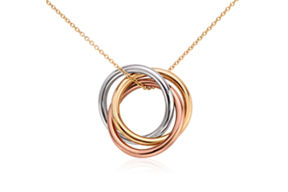
Gold has an extraordinary heritage with unique qualities. As an enduring element found naturally in a distinct yellow color, gold is resistant to rust, tarnish, and corrosion. Although gold is very strong, it's also the most malleable of all precious metals.
Gold has an extraordinary heritage with unique qualities. As an enduring element found naturally in a distinct yellow color, gold is resistant to rust, tarnish, and corrosion. Although gold is very strong, it's also the most malleable of all precious metals.
24K & 22K pure gold is too soft for everyday wear, so it is alloyed with a mixture of metals like silver, copper, nickel, and zinc to give it strength and durability. Karatage, denoted by a number followed by "k" indicates purity, or how much of the metal in a piece of jewelry is gold. Karatage is expressed in 24ths, making 24k gold, 100% gold.
We craft our jewelry using both 18k and 14k gold. 18k gold is composed of 75% gold, which is alloyed with other metals to make it strong enough for everyday wear. 14k gold is composed of 58.3% gold and 41.7% of other metals.
The color of gold is determined by two factors:
-The type of metal alloys included
-The percentage of each metal alloy

Natural gold and color-saturated alloys are what give yellow gold jewelry its rich shine. The alloys most commonly used, are copper with a red hue, and silver featuring a green hue. An expert mixture of copper, silver and pure gold gives this precious metal its signature warmth.
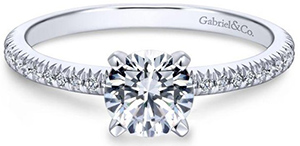
A silvery white character is what makes white gold jewelry so appealing. In order to make the gold white, it is combined with metal alloys that are white in nature and plated with an extremely hard element called rhodium. Although strong, rhodium may wear away over time.
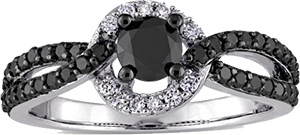
Black rhodium is plated to white gold creating a rich black appearance that is extremely hard and strong. As with traditional white rhodium, black rhodium may wear away over time. Replating is a simple process that Alankara offers to restore your jewelry's black finish.
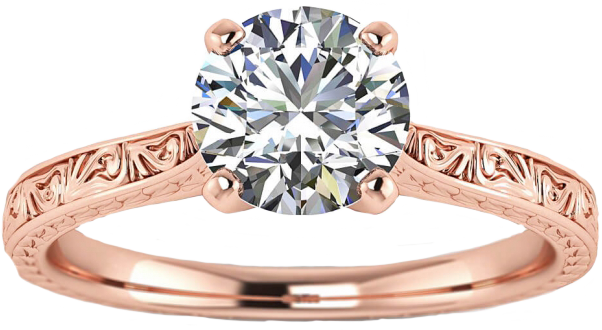
The beautiful pink hue of rose gold jewelry is created by using a copper alloy. Again, the overall percentages of metal alloys is the same for rose gold as it is for yellow or white, there is just a different mixture in what alloys are used.
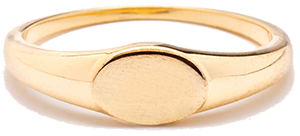
Rich in golden color, many of our fine jewelry pieces are crafted with vermeil. The industry standard definition of vermeil is sterling silver that is plated with 10k gold with a minimum of 2.5 microns in thickness for longwearing durability. At Alankara, we strive to offer a higher quality to our customers. Our vermeil pieces feature 14k to 24k gold.
Gold, element Au, was one of the first known metals. The gold standard defines the world's currency system, whereby money represents a value in gold.
-24 karat = 100% gold(Too soft for fine jewelry)
-22 karat = 91.7% gold(Too soft for fine jewelry)
-18 karat = 75.0% gold(Ideal for fine jewelry)
-14 karat = 58.3% gold(Ideal for fine jewelry)
-10 karat = 41.7% gold(Available for custom orders. Ideal for men’s wedding bands)
Our 18k and 14k gold jewelry is intricately crafted into beautiful pieces for every occasion or style.
Gold jewelry prices are dependent upon the purity of the gold used or karat weight, the market value of gold, and the level of craftsmanship and design of each jewelry piece.
Since gold is a natural element, it is affected by harsh chemicals such as chlorine or other cleaning products. We recommend that you remove your jewelry when using chemicals to reduce daily abrasions and prolong the luster. To clean gold jewelry, use a solution of warm water and detergent-free soap with a soft-bristled brush. When not worn, store your gold pieces in soft cloth bags or the original box to protect them from the elements of daily exposure.